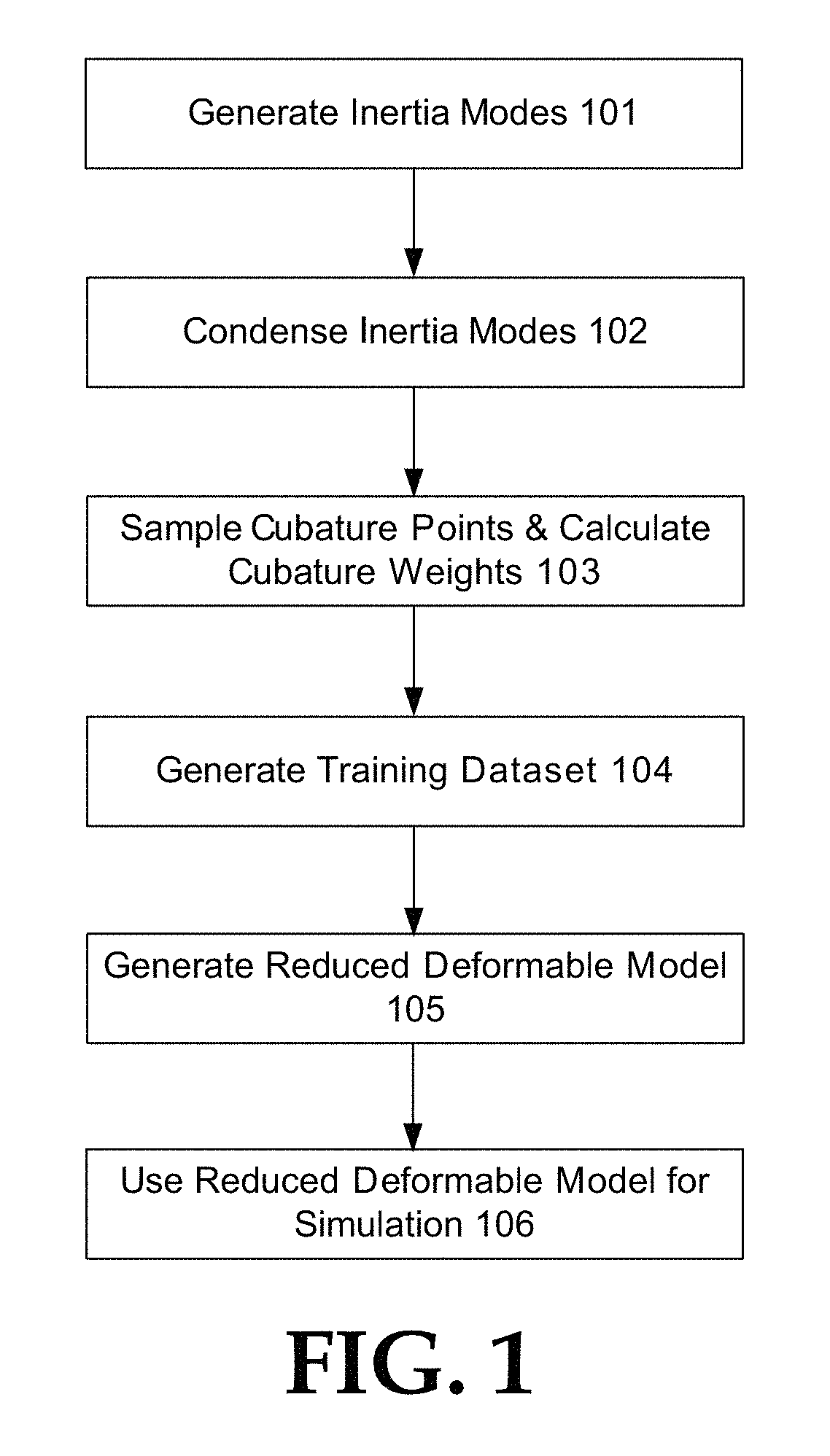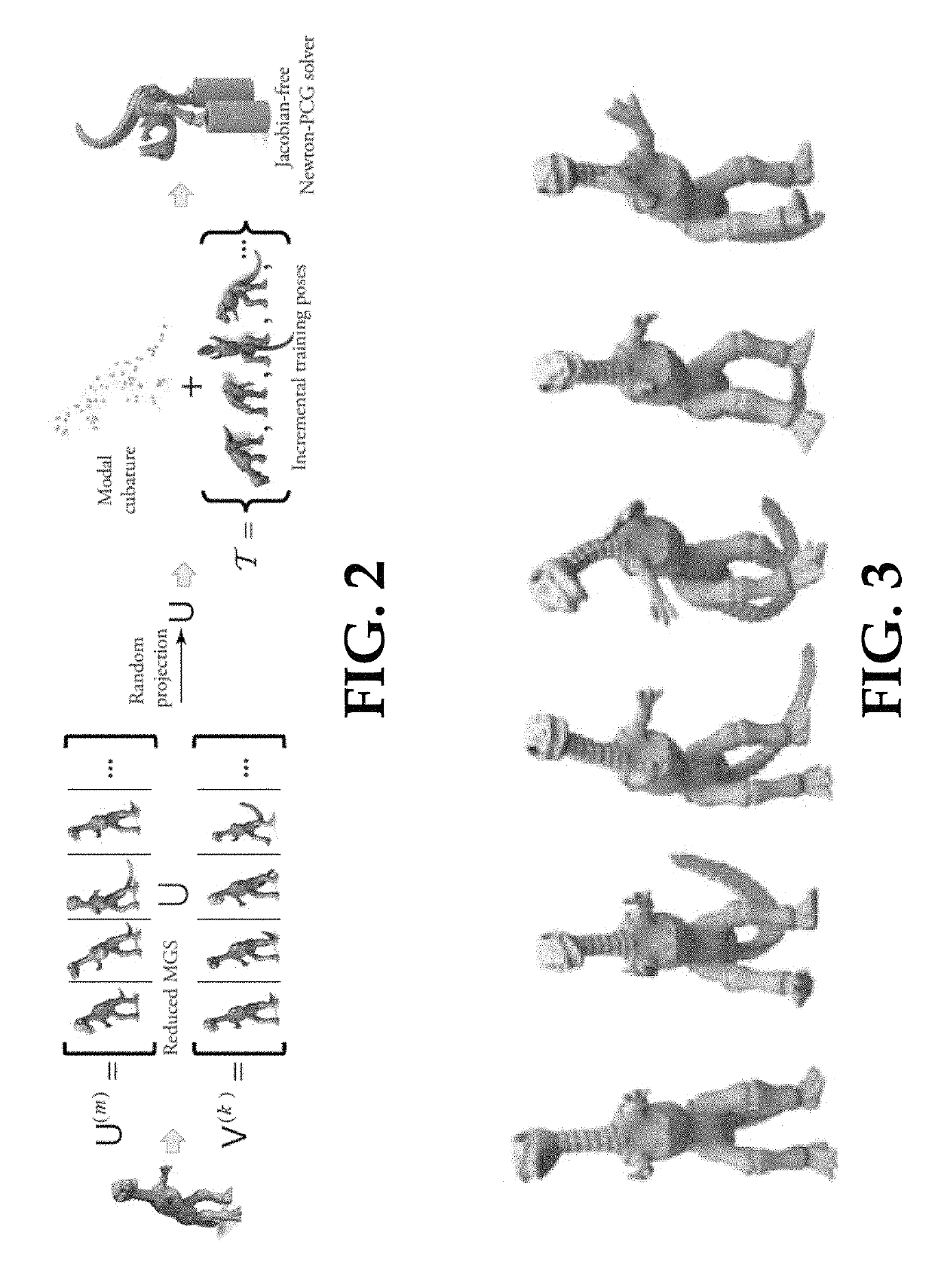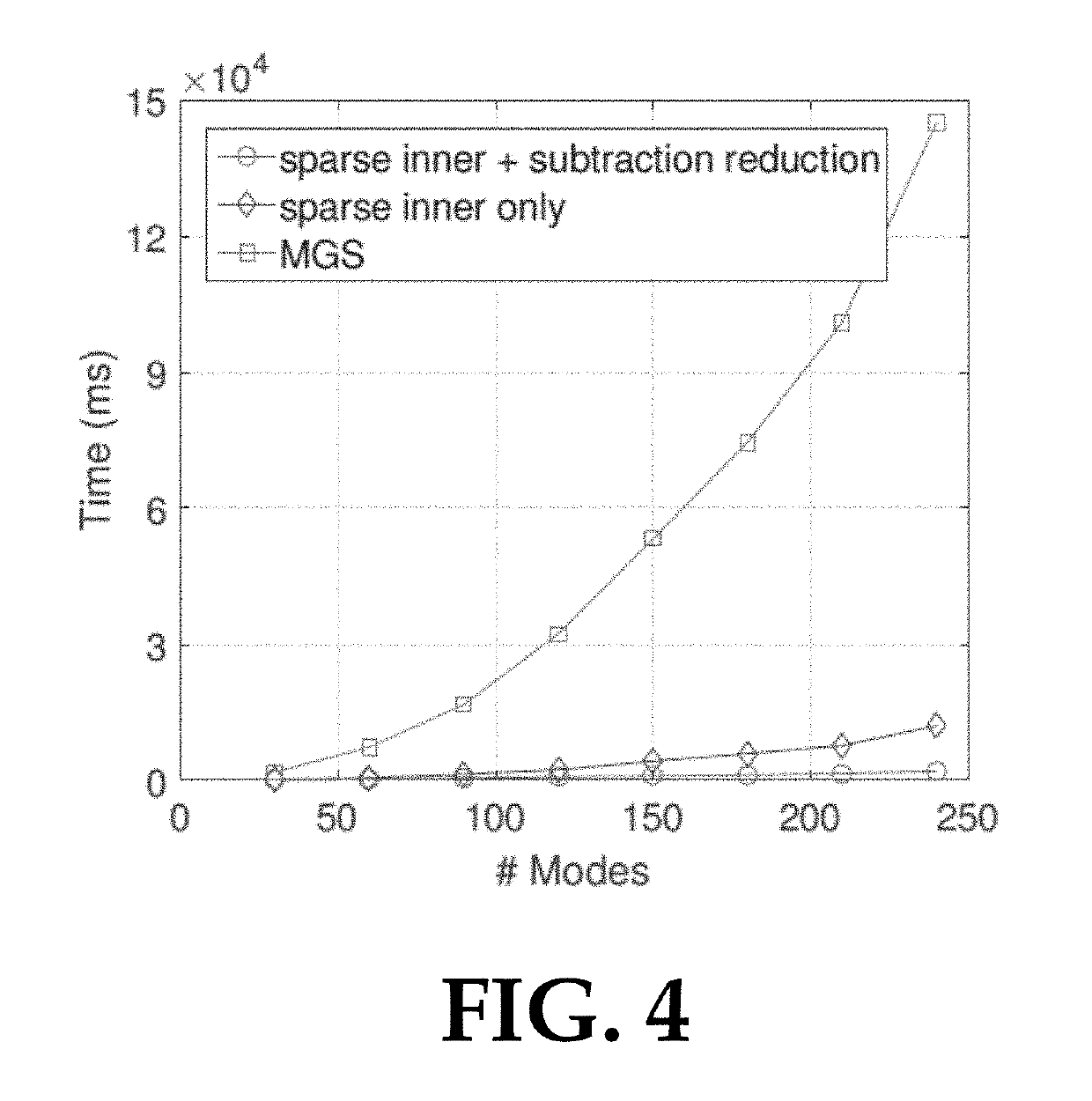Accelerated precomputation of reduced deformable models
a deformation model and precomputation technology, applied in the field of accelerated precomputation of reduced deformation models, can solve the problems of limited space to accelerate, high computational cost, and difficulty in constructing “good” subspaces,
- Summary
- Abstract
- Description
- Claims
- Application Information
AI Technical Summary
Benefits of technology
Problems solved by technology
Method used
Image
Examples
Embodiment Construction
[0030]Prior to explaining embodiments of the invention in detail, it is to be understood that this disclosure is not limited to the details of construction or arrangements of the components and method steps set forth in the following description or illustrated in the drawings. Embodiments of this disclosure are capable of other embodiments and of being practiced and carried out in various ways. Also, it is to be understood that the phraseology and terminology employed herein are for the purpose of the description and should not be regarded as limiting.
[0031]FIG. 1 illustrates an example method to precompute a reduced deformable model for an object represented by an input mesh, according to at least some embodiments of this disclosure. The operations of FIG. 1 may be carried out by a computing device, e.g., the example computing device illustrated in FIG. 21. The operations of FIG. 1 may therefore optionally be embodied as instructions on a computer readable medium as will be appreci...
PUM
 Login to View More
Login to View More Abstract
Description
Claims
Application Information
 Login to View More
Login to View More - R&D
- Intellectual Property
- Life Sciences
- Materials
- Tech Scout
- Unparalleled Data Quality
- Higher Quality Content
- 60% Fewer Hallucinations
Browse by: Latest US Patents, China's latest patents, Technical Efficacy Thesaurus, Application Domain, Technology Topic, Popular Technical Reports.
© 2025 PatSnap. All rights reserved.Legal|Privacy policy|Modern Slavery Act Transparency Statement|Sitemap|About US| Contact US: help@patsnap.com



